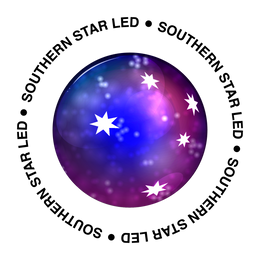Lumens Are For Humans, PAR Is For Plants..?

The phrase above is among the most misleading cliches in the LED grow light industry. Simply put, both lumens and PAR measure light – one measures the intensity of bands that most register to the human eye, and the other, the total photons of every band in the visible spectrum.
Both are important, but both are not equal. PAR values vary dramatically per watt of power in each color band, those in the 625-700nm range, the reds and far reds, delivering the highest readings.
They make possible convenient cheats for ordinary LED grow lights, but such methods deliver lights far from adequately balanced to the needs of plants. In fact, cheap PAR has become the LED grow light industry’s rabbit-out-of-a-hat trick. And it’s not the only trick out there used to sell ‘fool’s gold’.

Okay, since we must, let’s talk PAR! In fact, later, we’ll build an LED grow light, and consider our choices, but first:
Concerning the question of lumens vs PAR the grow light industry creates a straw-man argument by asserting that lumens is a measurement of brightness according to the limitations of human vision whereas plants don’t ‘see’ light as we do but simply need photons in the 400-700nm range at a given density per second per area.
In fact, the bands between 500-620nm, which appear brightest to the human eye, are the green and orange colors plants use the least, or so the industry alleges. This is a straw-man argument because it’s easily dispensed with, and all the ‘scientific’ hair-splitting with it, by the fact that our sun is the ultimate human and botanical light source. A bright sun is better for growing than a dull one. It’s intensity, even by our human, lumen, bias, is still, in practice, the more telling cultivation consideration, not its PAR values, which constantly vary.
Traditional HID lighting sources are abundant primarily in these ‘useless’ bands and have performed like champions for decades because they are very bright, like a good sun. Again, current research at the Australian National University corroborates field observations over decades and explains the historical success of HID lighting systems while directly contradicting industry propaganda and their absolute-PAR-at-any-cost mindset. If you love good science and lots of data, you can read this research
HERE.
We’ve taken what has always worked, added what was missing, and tuned it to deliver our Australian sun to your grow room.

But let’s now, instead, build a fetish-light, one PAR meters would enjoy. White chips, no matter the brand, are generally considered ‘full spectrum’ and a good mix of warm and cool whites ought to satisfy any spectrum-purists.
Let’s take, say, 100 warm and 100 cool chips running at 1 watt each and whatever PAR value these 200 chips deliver we can improve on. Lets replace 10 of each with 630mn red chips also running 1 watt each and – hey presto! more PAR, and cheaper to make.
Let’s not stop there, let’s replace another 10 warm and cool whites with even redder 660nm chips. Now our PAR meter is ecstatic, but perhaps our plants are not.
A strong light with high PPFD values doesn’t need more cheap PAR to outdo the other brand but needs more complete light. Again, to quote the Australian National University, ‘...red or blue light is preferentially absorbed by the chloroplasts in the upper part of the leaf. Then, when PPFD is high, the energy of these wavelengths tends to be dissipated as heat by the upper chloroplasts, while green light drives photosynthesis in the lower chloroplasts that are not light saturated (Sun et al. 1998, Nishio 2000).
So what have we actually built with these whites and reds? Sure, this light is not as bright, to our lumens biased human vision, but the plants must appreciate our ‘scientific’ efforts, right? In fact, we see inter-nodal stretching in our vegetative phase with such lights, greater Calcium and Magnesium uptake for no equivalent returns in productive biomass, and premature finishing in flowers across far too many genotypes to consider this PAR-meter-darling as anything remotely similar to true sunlight.

We asked one of our engineers in the early stages of the Southern Star 420+ Medic project, ‘Could we get a light in that wattage with a PAR efficacy higher than 3 moles per jewel?’ He scratched his chin and said, ‘Sure, but do you want tech-tricks or a grow-light?’
The SS420+ Medic LED grow light is tuned by seasoned growers to deliver natural and correct results – fast vegetative growth and short nodal spacing, early bud-set and heavy bud-stacking in flower, and a true and complete finish even in the lowers of your crop. The perfect grow light must satisfy so many conditions it qualifies as a technological symphony and is as much an expression of its engineers as the growers it must first satisfy.






